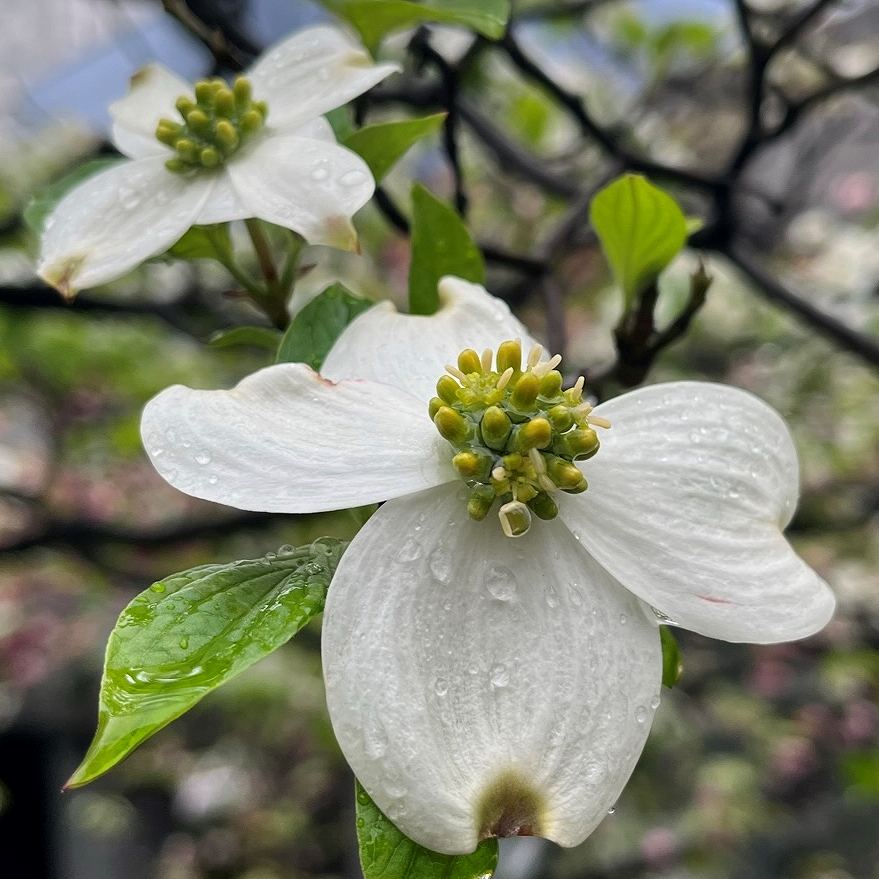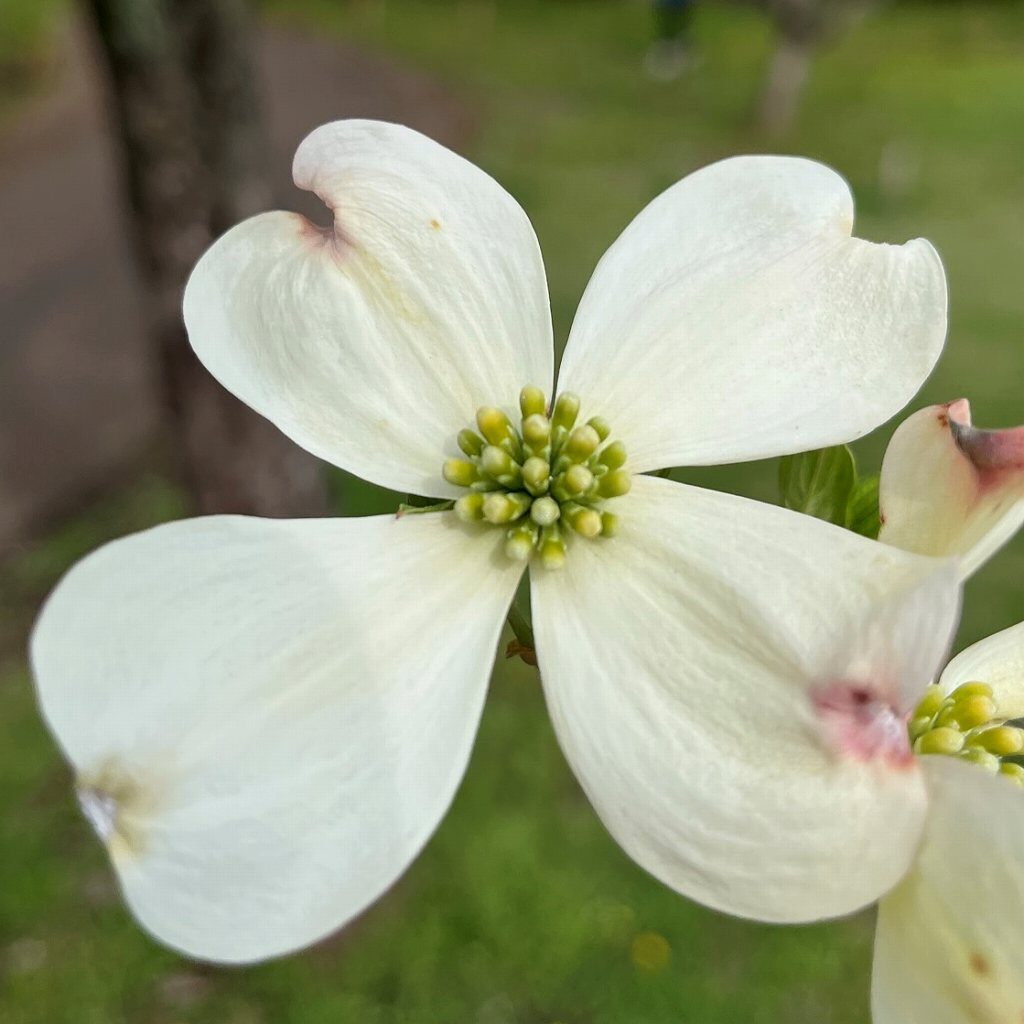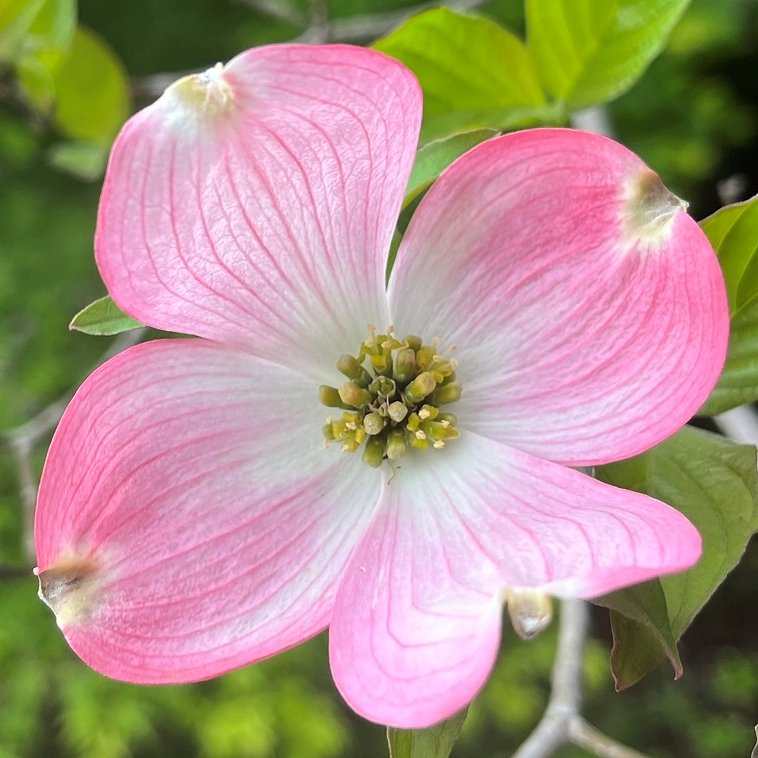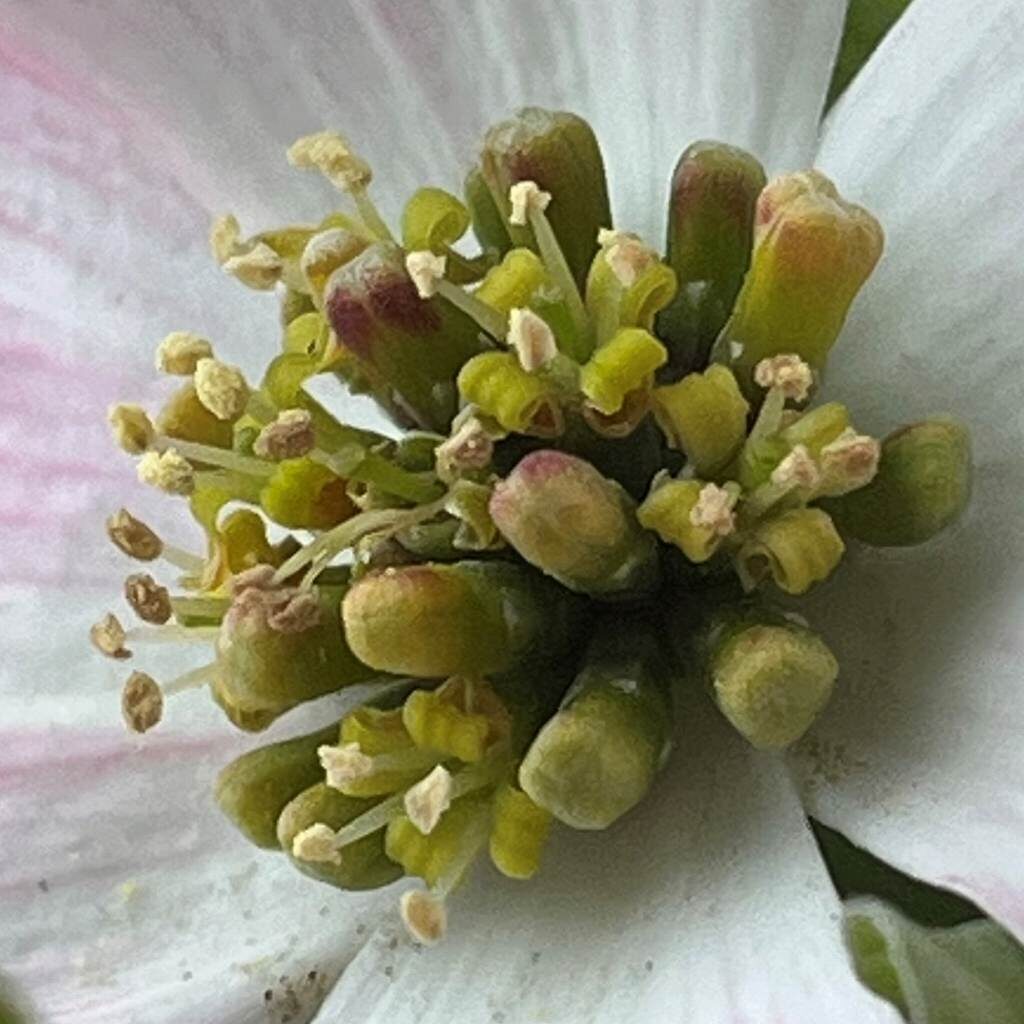ハナミズキは花弁のように見える大きな総苞が4枚、その真ん中に小さな花が密集し、花弁が4枚。赤い果実は渋味が強く、食べられません。
Flowering dogwood has four large bracts that look like petals, with small flowers densely packed in the middle and four petals. Red fruits have a strong astringency and cannot be eaten.
【仮名】ハナミズキ, アメリカヤマボウシ
【和名】花水木, 亜米利加山法師
【英名】Flowering Dogwood
【学名】Cornus florida
【誕生】03/ 18, 04/ 23, 05/ 02, 05/ 04, 05/ 09
【開花】04, 05月
【花色】White, Pink






ハナミズキ
ハナミズキの原産地
ハナミズキはミズキ科の落葉高木です。原産地は北米で、東海岸からミシシッピ川周辺まで自生。公園や街路樹、庭木などでは樹が高くなり過ぎないよう、剪定で樹形が整えられます。日本でのサクラのように、米国で最も親しみのある花木。生長は遅いものの、材は硬くて真直です。
ハナミズキの来歴
ハナミズキの日本での歴史は浅く20世紀に入ってからです。きっかけは日本の首都・東京市から米国の首都コロンビア特別区にサクラの苗木が贈られ、その返礼としてハナミズキの苗木が贈られたから。今では米国各地にサクラの名所があり、日本全国にハナミズキが植わっています。
ハナミズキの名前
ハナミズキの名前の由来は、樹が日本に自生する「水木」に似ていながら、花が水木よりも大きく、華やかだからです。別名のアメリカヤマボウシは、米国から持ち込まれたにも関わらず、花の形が日本に自生する「山法師」にそっくりだから。山法師は2カ月ほど遅れて開花します。
ハナミズキの形態
ハナミズキの花は、花弁のように見える大きな総苞が4枚、その真ん中に小さな花が密集し、花弁は4枚。果実は赤い卵球形で、毒性はないものの渋味が強く、食べられません。葉は対生の楕円形で開花後に開き、秋に紅葉、冬に落葉。木は灰色の樹皮に細かく深い割れ目が入ります。
ハナミズキの逸話
ハナミズキは、ナザレのイエスが磔にされたとき、その材に用いられたという逸話があります。総苞が4枚で十字架のような形。先端に釘を刺されて傷ついたような窪みもあります。しかし、当時のエルサレムは自生地まで遠く、材の調達は不可能。20世紀に広がった逸話のようです。
ハナミズキの花言葉
ハナミズキの花言葉は、ゆっくり生長して美しい花を咲かせるから「永続性」「華やかな恋」。また、明治時代の終わりに東京市とコロンビア特別区とで平和と親善の象徴としてサクラの苗木とハナミズキの苗木が互いに贈呈されたことから、「返礼」「私の想いを受けとめて」です。
Flowering Dogwood
Flowering dogwood is a deciduous tree of the dogwood family. It originates in North America and grows naturally from the east coast to the Mississippi River. In parks, roadside trees, garden trees, etc., the tree shape is trimmed by pruning so that the trees do not grow too high. The most familiar flowering tree in the United States, like Sakura in Japan. Although it grows slowly, the wood is hard and straight.
Flowering dogwood has a short history in Japan since the beginning of the 20th century. Tokyo city, the capital of Japan, gave a sapling of cherry blossoms to the special district of Columbia, the capital of the United States, and in return, a sapling of Flowering dogwood was given. Nowadays, there are famous cherry blossom spots all over the United States, and Flowering dogwood is planted all over Japan.
The origin of the Flowering dogwood name is that the tree resembles “Mizuki” that grows naturally in Japan, but the flowers are larger and more gorgeous than Mizuki. The other name, American Yamaboshi, is similar to the “Yamaboshi” that grows naturally in Japan, even though it was brought from the United States. Yamaboshi blooms about two months later.
The Flowering dogwood have four large bracts that look like petals, and small flowers are densely packed in the middle, with four petals. The fruits are red egg-shaped and are not toxic but have a strong astringency and cannot be eaten. The leaves are opposite oval and open after flowering, with autumn leaves and fallen leaves in winter. The tree has fine and deep cracks in the gray bark.
There is an anecdote that Flowering dogwood was used for the material when Jesus of Nazareth was crucifixed. It has 4 bracts and is shaped like a cross. There is also a dent that looks like it was damaged by a nail stuck in the tip. However, Jerusalem at that time was far from its own fabric, and it was impossible to procure materials. It seems to be an anecdote that spread in the 20th century.
The Flowering dogwood’s flower language is “permanence” and “gorgeous love” because it grows slowly and blooms beautiful flowers. Also, at the end of the Meiji era, cherry blossom saplings and dogwood saplings were presented to each other as symbols of peace and goodwill in Tokyo City and the District of Columbia, so the flower language is “return” and “accept my thoughts.”


